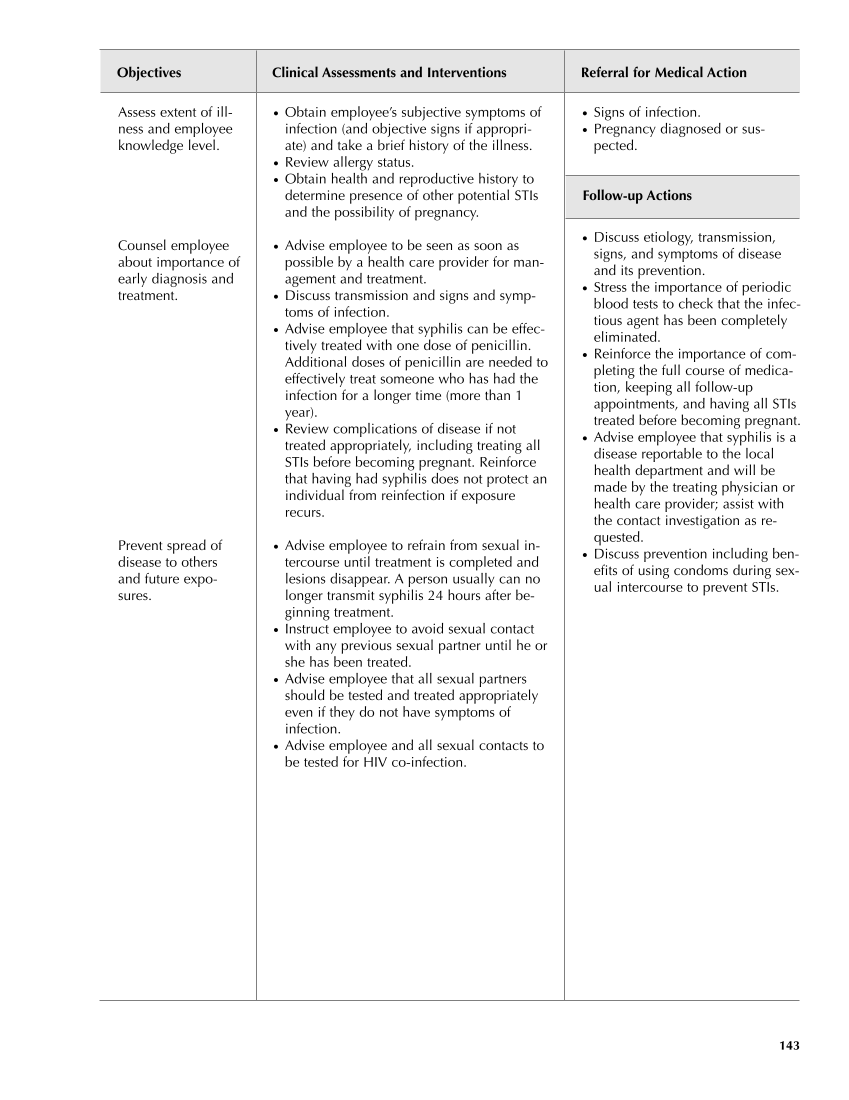● Signs of infection. ● Pregnancy diagnosed or sus- pected. Follow-up Actions ● Discuss etiology, transmission, signs, and symptoms of disease and its prevention. ● Stress the importance of periodic blood tests to check that the infec- tious agent has been completely eliminated. ● Reinforce the importance of com- pleting the full course of medica- tion, keeping all follow-up appointments, and having all STIs treated before becoming pregnant. ● Advise employee that syphilis is a disease reportable to the local health department and will be made by the treating physician or health care provider assist with the contact investigation as re- quested. ● Discuss prevention including ben- efits of using condoms during sex- ual intercourse to prevent STIs. Objectives Clinical Assessments and Interventions Referral for Medical Action 143 Assess extent of ill- ness and employee knowledge level. Counsel employee about importance of early diagnosis and treatment. Prevent spread of disease to others and future expo- sures. ● Obtain employee’s subjective symptoms of infection (and objective signs if appropri- ate) and take a brief history of the illness. ● Review allergy status. ● Obtain health and reproductive history to determine presence of other potential STIs and the possibility of pregnancy. ● Advise employee to be seen as soon as possible by a health care provider for man- agement and treatment. ● Discuss transmission and signs and symp- toms of infection. ● Advise employee that syphilis can be effec- tively treated with one dose of penicillin. Additional doses of penicillin are needed to effectively treat someone who has had the infection for a longer time (more than 1 year). ● Review complications of disease if not treated appropriately, including treating all STIs before becoming pregnant. Reinforce that having had syphilis does not protect an individual from reinfection if exposure recurs. ● Advise employee to refrain from sexual in- tercourse until treatment is completed and lesions disappear. A person usually can no longer transmit syphilis 24 hours after be- ginning treatment. ● Instruct employee to avoid sexual contact with any previous sexual partner until he or she has been treated. ● Advise employee that all sexual partners should be tested and treated appropriately even if they do not have symptoms of infection. ● Advise employee and all sexual contacts to be tested for HIV co-infection. Guideline continues on next page
Purchased from OEM Press by (ge corporate access). (C) 2013 OEM Health Information, Inc. All rights reserved.












































































































































































































































































































































































































































